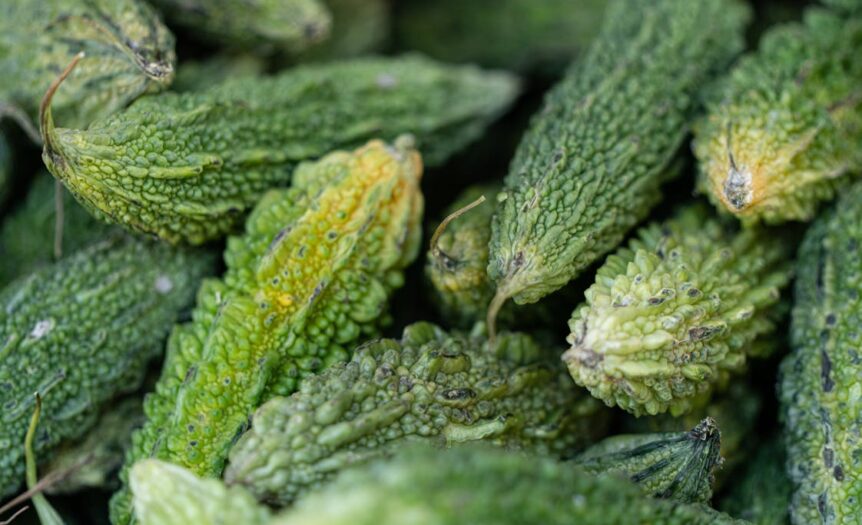Karela, also known as bitter gourd or bitter melon, is a remarkable vegetable known for its unique taste and incredible health benefits. Its scientific name, Momordica charantia, reflects its significance in traditional medicine, particularly for managing blood sugar levels. Popular in many cuisines worldwide, karela is prized for its ability to aid individuals with diabetes or those seeking to maintain balanced blood sugar levels.
Nutritional Profile of Karela
Karela is a low-calorie, nutrient-rich vegetable that contains essential vitamins and minerals. It is an excellent source of vitamin C, which supports the immune system, and vitamin A, which promotes healthy vision. Karela is also high in dietary fiber, which aids digestion and contributes to a feeling of fullness. Its low glycemic index (GI) ensures it has a minimal impact on blood sugar levels, making it a diabetes-friendly choice.
Additionally, karela is rich in plant compounds such as polyphenols, flavonoids, and alkaloids. These bioactive components are believed to have anti-diabetic, anti-inflammatory, and antioxidant properties. Among these compounds, charantin, vicine, and polypeptide-p are especially significant, as they help regulate glucose metabolism in the body.
How Karela Helps Control Blood Sugar Levels
Karela’s effectiveness in managing blood sugar levels lies in its ability to influence glucose regulation. The vegetable contains several compounds that mimic the action of insulin, helping to lower blood sugar levels naturally.
Improved Insulin Sensitivity
Karela enhances insulin sensitivity, allowing cells to absorb glucose more efficiently from the bloodstream. This reduces blood sugar spikes after meals.
Reduction in Glucose Absorption
The fiber content in karela slows the absorption of sugar in the intestines, preventing rapid increases in blood sugar levels.
Stimulation of Insulin Secretion
Certain bioactive compounds in karela stimulate the pancreas to produce more insulin, especially beneficial for individuals with type 2 diabetes.
Prevention of Excess Glucose Storage
Karela helps regulate enzymes involved in glucose metabolism, reducing the conversion of sugar into fat and preventing excessive glucose storage in the body.
Ways to Incorporate Karela into Your Diet
There are numerous ways to include karela in your daily meals, ensuring you reap its benefits while enjoying its distinct taste.
Juice:
Karela juice is a popular option for individuals looking to manage diabetes. Consuming it on an empty stomach can maximize its glucose-lowering effects.
Stir-fries:
Combine karela with other vegetables and spices to balance its bitterness.
Stuffed Karela:
Fill karela with a mixture of spices and herbs for a delicious, healthful dish.
Soup or Curry:
Add karela to soups or curries for a nutrient boost.
Precautions and Considerations
While karela is beneficial, consuming it in excess may lead to low blood sugar (hypoglycemia), especially for those already on diabetes medication. Pregnant women and individuals with certain medical conditions should consult a healthcare provider before adding karela to their diet.
Conclusion
Karela is a powerful vegetable for individuals seeking to manage blood sugar levels naturally. With its impressive nutritional profile and medicinal properties, it offers a natural and effective way to promote overall health. Including karela in your diet can support glucose control, improve digestion, and enhance overall well-being. Whether consumed as juice, stir-fry, or curry, karela is a valuable addition to a healthy lifestyle.




